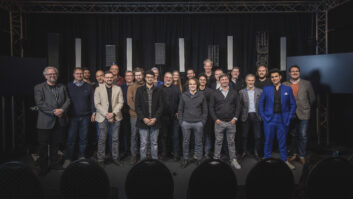
September 2014 will see South Korea host the XVII Asian Games. The newly built Evergreen Gymnasium, which will host volleyball and kabaddi ties up to the quarterfinal stages, has been installed with a Renkus-Heinz PN102 line array system.
The local Government-owned building is a hybrid venue – functioning as both a sporting facility and a concert hall. It was therefore requested that any new audio system be of high quality and performance.
Audio company Daikying Vascom was engaged to deploy the new sound system having previously installed a system where the local council presides. The latest install was facilitated by systems integration specialist Sinwoo.
Flexibility was the keyword when it came to designing the space, which will be hosting a wide variety of events. Permanent seats are available in the upper part of the hall, while bleacher-style seating along the hall’s two longer walls is retractable and can be folded back to the walls to accommodate more people. What’s more, a stage can be constructed at the far end of the hall for large concerts. When being used in this configuration, temporary seating can be set up on the floor of the gymnasium, and a total of around 3,000 people can be accommodated.
The main system in the Evergreen Gymnasium’s main hall comprises 32 PN102LAR array loudspeakers, configured as four arrays of eight cabinets each, 90º apart. The arrays are positioned on each corner of a centrally-flown block which houses four large screens, so that spectators on all four sides of the hall have a close up view of the action. Additional fills are provided by four PN121-series two-way cabinets, as well as five ST4 three-way systems and a pair of CFX151 boxes. Four DR18-2 and two PN112SUB subwoofers provide low frequency reinforcement.
“The PN102 line arrays were selected for their accurate and even coverage pattern, providing consistent coverage to every seat in the hall,” commented Daikyung Vascom’s CEO Patrick Han. “RHAON (Renkus-Heinz Audio Operations Network) control was another important factor in selecting the system, enabling networked DSP control over the entire system.”







